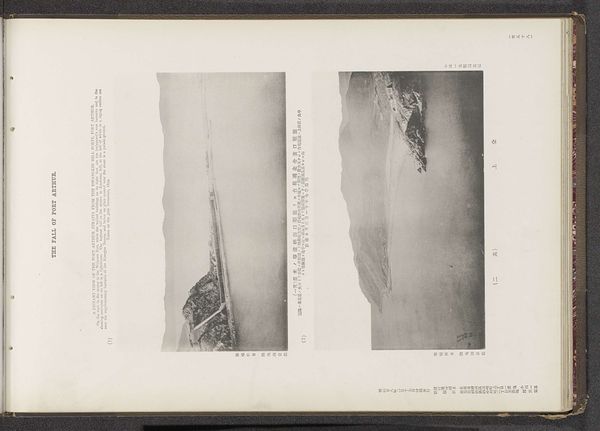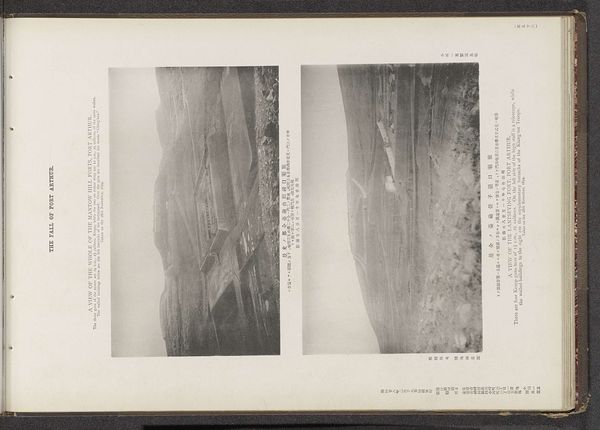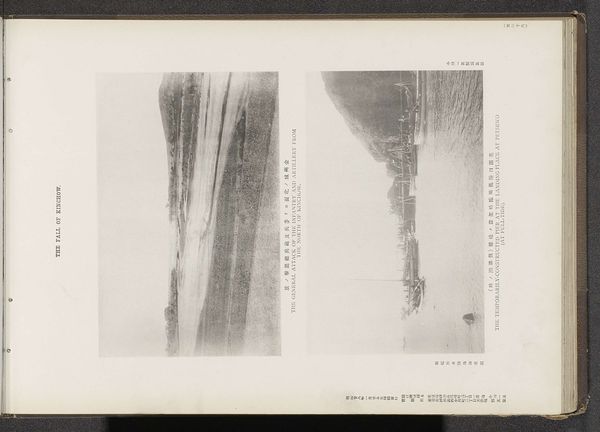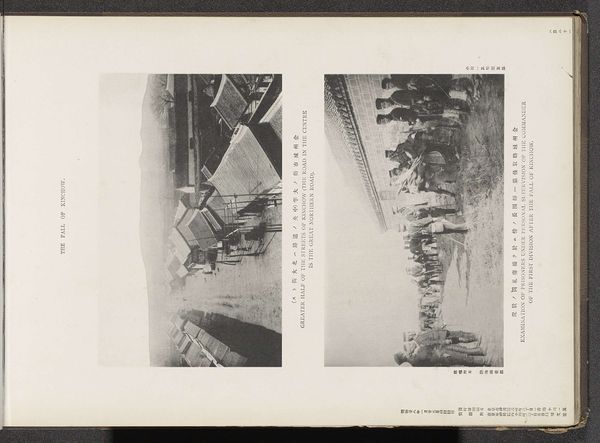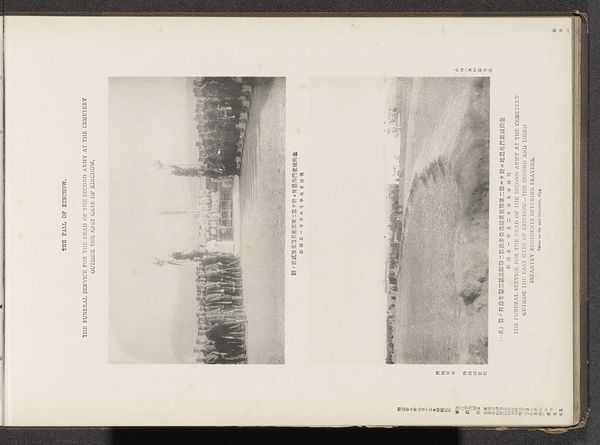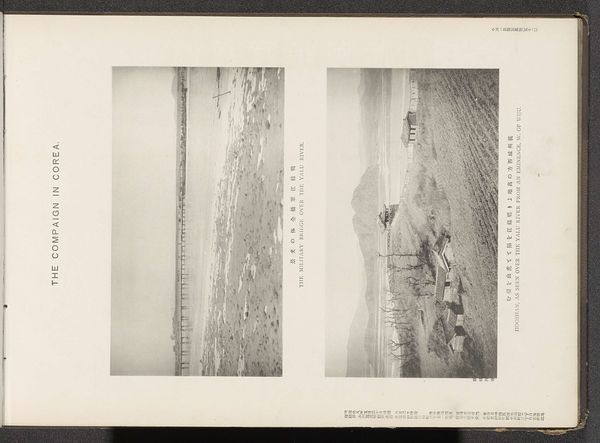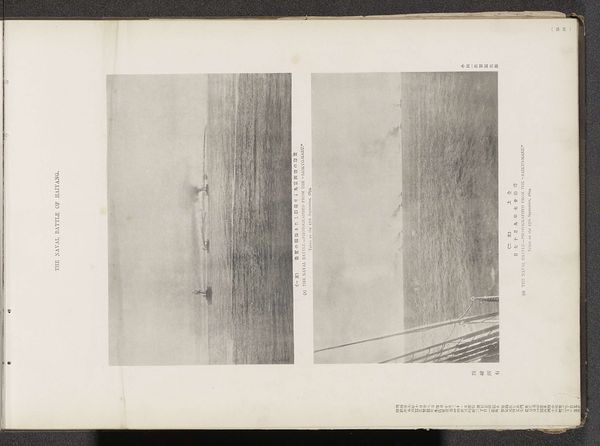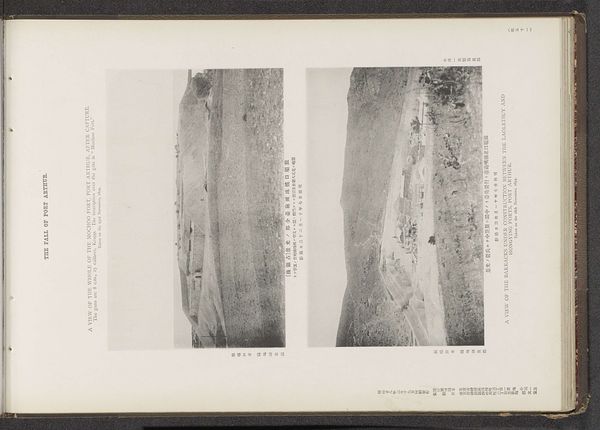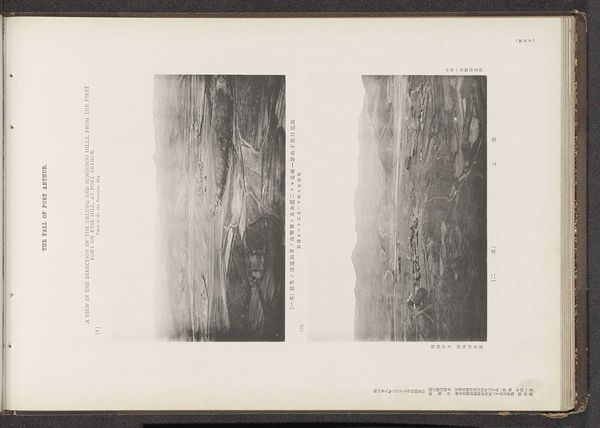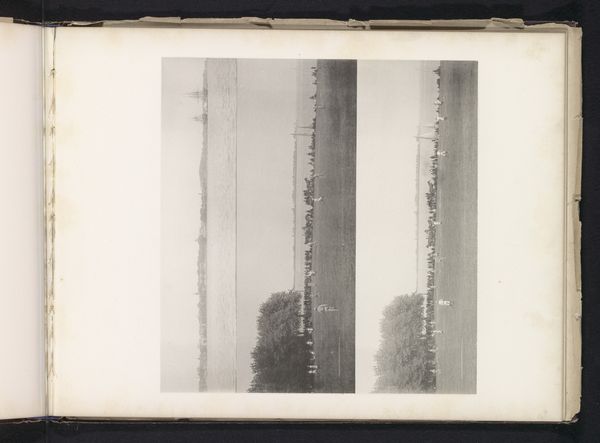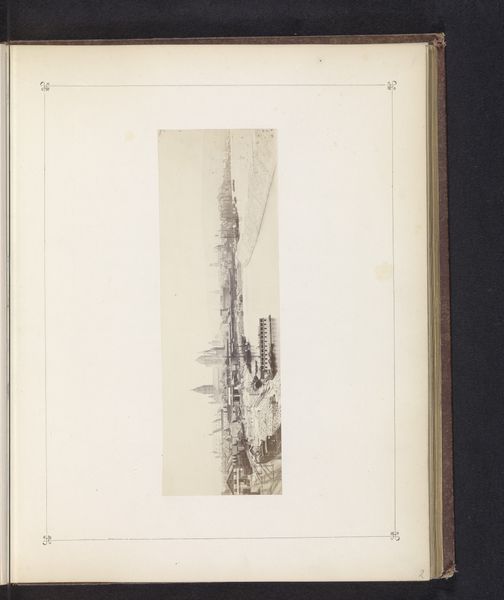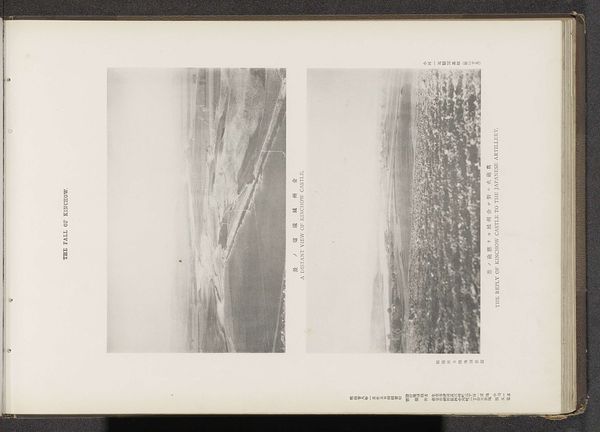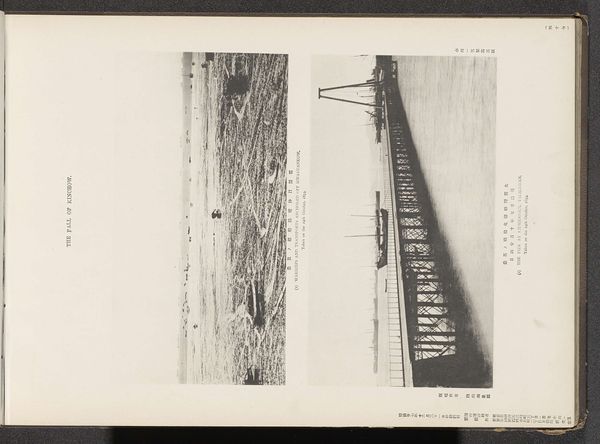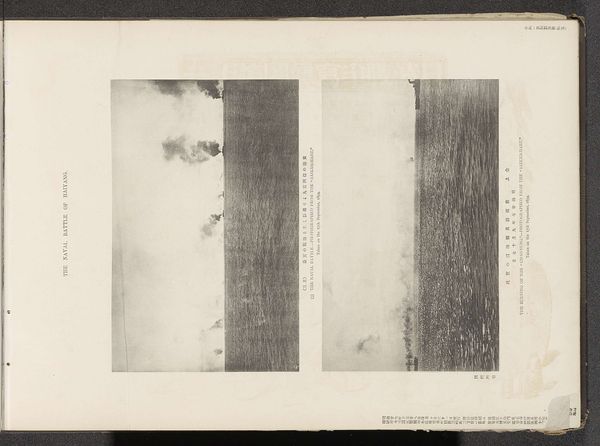
print, photography
#
still-life-photography
# print
#
asian-art
#
photography
Dimensions: height 426 mm, width 195 mm
Copyright: Rijks Museum: Open Domain
Curator: This photograph, possibly from 1894, is titled "Regimenten van het Japanse leger te China," and it appears to be a print. It depicts scenes involving the Japanese army. My initial read brings to mind a feeling of detachment. Editor: Detachment indeed. It's a very clinical view, almost sterile despite depicting what is likely a very fraught moment. Look at the uniformity, the seemingly endless lines. The visual weight given to documenting every rank, gives this photograph a mood that reflects standardization. Curator: Standardization becomes key when looking at colonial military photography. Here, this photographic print would circulate within a network. Think about how prints reproduce quickly and cheaply as they disseminate images of power globally. What kind of image of Japanese military prowess would this project for viewers? Editor: That's where the materiality is interesting, too. I'm thinking of the actual labor that went into arranging the soldiers and equipment with this uniformity, especially when reproduced in a format like this, seemingly documentary in nature, there is always an act of labor. Curator: Exactly, because it is also a social and political act, it certainly reflects on Japan's position in Asia at the time, during the first Sino-Japanese War, and suggests something about the nation's aspirations, as well as the technology of documenting that reach. These photographs offered an image of total command. Editor: There's an undeniable distance in the aesthetic. The grainy quality further removes us, like we’re observing ants. We get these long lines of figures fading in the distance which reminds me of the actual distance maintained between the photographed and their homeland. It looks like what it is. Curator: These photographs perform a social function. The prints don’t just display; they work to inform and impress, which allows the expansionist goals that were becoming more prominent at this time. Editor: The very nature of print allows for wide, somewhat unfiltered access, reinforcing ideals through mass-produced imagery for the army. Thank you for highlighting that social aspect. Curator: Thank you, that’s so relevant when you think of a picture that documents these kind of events and also gives a specific feeling for us now.
Comments
No comments
Be the first to comment and join the conversation on the ultimate creative platform.
